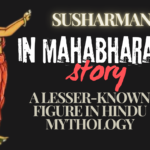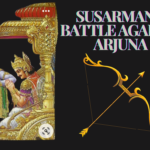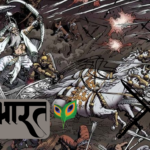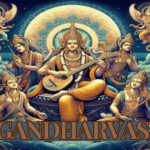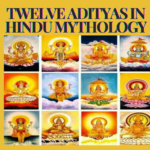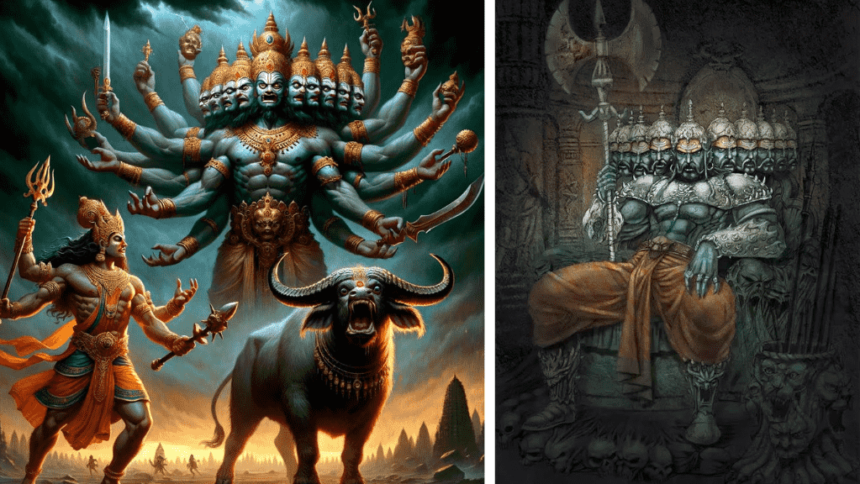n the vast and intricate tapestry of Indian mythology, demons play an essential role in illustrating the balance between good and evil, light and darkness, and the complexities of moral life. Unlike the simplistic depiction of demons as wholly malevolent beings in many other cultures, Indian mythology portrays demons, often referred to as Rakshasas, Asuras, and other malevolent entities, as complex characters with varied motives, powers, and significances. Understanding these demons requires a deep dive into their nature, their roles in the stories they inhabit, and the profound spiritual and moral lessons they convey.

The Duality of Demons
In Hindu mythology, demons are not monolithic embodiments of evil; rather, they are multifaceted beings with their own desires, strengths, and weaknesses. They often symbolize the darker aspects of human nature, such as greed, anger, and pride, but they also embody power, intelligence, and determination. The stories of these demons are not merely tales of conflict; they are rich narratives that explore the moral and spiritual dilemmas faced by both gods and humans.
Rakshasas: Guardians Turned Destroyers
The Rakshasas are one of the most well-known classes of demons in Indian mythology. Initially, the term “Rakshasa” meant “protector” or “guard,” but over time, it came to represent beings who were fierce, powerful, and often malevolent. Despite their fearsome reputation, not all Rakshasas were evil. Many were complex characters who straddled the line between good and bad.
Ravana (the most powerful asur), the ten-headed king of Lanka, is perhaps the most famous Rakshasa. He is a character of immense complexity—intelligent, knowledgeable, and a devout follower of Lord Shiva, yet driven by ego, lust, and ambition. Ravana’s abduction of Sita, the wife of Lord Rama, and his subsequent battle with Rama is a central narrative in the Ramayana. Ravana’s ten heads symbolize the ten emotions or negative aspects of human nature: lust, anger, greed, attachment, pride, jealousy, selfishness, injustice, cruelty, and ego. His downfall is a powerful reminder of the destructive potential of these emotions when left unchecked.
What made Ravana evil?
He kidnapped Sita, the spouse of Ram, and was struck down for that. Ravan is the evil spirit ruler of the Ramayana, the master of the Rakshasas, making ravan the original reprobate. What’s more, since ram is God for most Hindus, Ravan’s activities make him Satan in essence.
Kumbhakarna (younger brother of Ravana).
Ravana’s brother, is another prominent Rakshasa. Known for his enormous size and strength, Kumbhakarna was cursed to sleep for six months at a time. Despite his allegiance to Ravana, Kumbhakarna is often portrayed as a tragic figure, bound by loyalty and familial duty, yet ultimately doomed by his circumstances.

Why did Kumbhakarna sleep for 6 months?
Kumbhakarna had an insatiable appetite and thirst and used to sleep for great lengths of time. He also had an uncontrollable temper, which was feared by many. It is our assessment that Kumbhakarna possibly suffered from hypothalamic obesity.
Asuras: The Eternal Rivals of the Devas
The Asuras are another significant group of demons in Indian mythology. They are often depicted as the eternal adversaries of the Devas (gods), symbolizing the constant struggle between good and evil, order and chaos. However, the Asuras are not merely evil beings; many of them possess great knowledge, power, and devotion.
Hiranyakashipu
Hiranyakashipu is one of the most famous Asuras, known for his intense devotion to Lord Brahma, from whom he received a boon of near-immortality. However, his arrogance and desire to be worshipped as a god led to his downfall at the hands of Narasimha, an avatar of Lord Vishnu. Hiranyakashipu’s story is a cautionary tale about the dangers of pride and the consequences of defying the divine order.

Who is Hiranyakashipu in Hinduism?
The evil spirit Hiranyakashipu — twin sibling of Hiranyaksha, the devil ousted by Vishnu in his past manifestation as Varaha — got an aid from the god Brahma that he was unable to be killed by human or creature, from inside or outside, by day or around evening time, and that no weapon could…
Why did Hiranyakashipu hate Vishnu?
After Hiranyakashipu’s more youthful sibling, Hiranyaksha, was killed by the hands of the Varaha symbol of Vishnu, Hiranyakashipu came to can’t stand Vishnu. He chose to kill him by acquiring a shelter of safety from Brahma.In Hindu folklore, Hiranyakashipu was a strong devil ruler who controlled the daityas. He was extremely irate when his sibling Hiranyaksha was killed by Vishnu in his Varaha symbol. So he chose to become invulnerable by playing out a compensation to Brahma.
Mahishasura
Mahishasura, the buffalo demon, is another key figure among the Asuras. His battle with the goddess Durga is a central narrative in the Devi Mahatmya, a text that celebrates the victory of the goddess over evil forces. Mahishasura, who could change his form at will, represents the ever-changing and deceptive nature of evil, and his defeat by Durga symbolizes the triumph of good over evil.

What are the powers of Mahishasura?
Rambha, the ruler of asuras, and Princess Shyamala, an evil presence reviled to be a bison, fell head over heels. Their child was named Mahishasura. Mahishasura had the capacity to change structures voluntarily, a power he utilized later to fight the devas in paradise. Yet, the devas pursued him away without fail.
Which avatar killed Mahishasura?
Katyayani: Born out of anger of Gods, the sixth avatar of Maa Durga killed the demon Mahishasura. Destroyer of evil, Maa Katyayani, she was created out of spontaneous anger of the gods which eventually led to the killing of the demon, Mahishasur

Rakshasas and Asuras in Epic Tales: The Ramayana and Mahabharata
The Ramayana and Mahabharata, two of the most important epics in Hindu mythology, are filled with stories of demons who play crucial roles in the unfolding of their narratives.
In the Ramayana, the Rakshasas are central to the conflict. Ravana, along with his siblings Kumbhakarna and Surpanakha, are key antagonists. Ravana’s abduction of Sita leads to the epic battle between good and evil, with Lord Rama representing dharma (righteousness) and Ravana representing adharma (unrighteousness). The Rakshasas in the Ramayana are not just villains; they are complex beings whose actions drive the moral and spiritual lessons of the story.

In the Mahabharata, the Rakshasa Ghatotkacha, the son of Bhima and the Rakshasi Hidimbi, plays a significant role. Ghatotkacha, with his immense strength and magical powers, is a formidable warrior who fights on the side of the Pandavas. His story highlights the theme of loyalty and sacrifice, as he ultimately gives his life to protect the Pandavas in the Kurukshetra War.
The Symbolism and Spiritual Significance of Demons
Demons in Indian mythology are not just antagonists in stories; they are symbolic representations of the internal and external challenges that individuals face. They embody the darker aspects of the human psyche and the world, such as greed, anger, pride, and chaos. However, they also serve as important figures in the spiritual journey, representing the obstacles that must be overcome to achieve spiritual growth and enlightenment.
For example, Ravana’s ten heads are often interpreted as the ten negative emotions that cloud the human mind. His defeat by Lord Rama symbolizes the victory of divine consciousness over these negative traits. Similarly, the defeat of Mahishasura by Goddess Durga is symbolic of the triumph of divine feminine energy over the forces of chaos and ignorance.
The battles between the Devas and Asuras, as well as the conflicts between humans and Rakshasas, are metaphors for the eternal struggle between good and evil, knowledge and ignorance, order and chaos. These stories are not just tales of ancient times; they are timeless lessons that continue to resonate with people, offering guidance on how to navigate the complexities of life.
